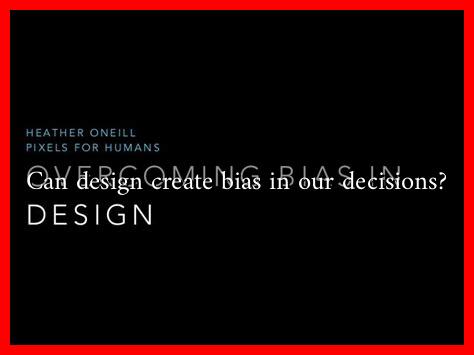-
Table of Contents
Can Design Create Bias in Our Decisions?
In an increasingly complex world, the design of products, services, and environments plays a crucial role in shaping our decisions. From the layout of a website to the packaging of a product, design can subtly influence our choices, often without our conscious awareness. This article explores how design can create bias in our decisions, examining the psychological mechanisms at play, providing real-world examples, and discussing the implications for consumers and designers alike.
The Psychology of Design and Decision-Making
Design is not merely about aesthetics; it is deeply intertwined with human psychology. Cognitive biases—systematic patterns of deviation from norm or rationality in judgment—can be exacerbated by design elements. Here are some key psychological principles that illustrate how design can influence our decisions:
- Framing Effect: The way information is presented can significantly affect our choices. For instance, a product labeled as “90% fat-free” may be more appealing than one labeled “contains 10% fat,” even though they convey the same information.
- Anchoring Bias: Initial information serves as a reference point for subsequent judgments. For example, if a luxury item is displayed next to a more expensive item, the luxury item may seem more reasonably priced, influencing purchasing decisions.
- Choice Overload: Too many options can lead to decision paralysis. A well-designed interface that simplifies choices can help consumers make quicker and more satisfying decisions.
Real-World Examples of Design-Induced Bias
Several case studies illustrate how design can create bias in decision-making:
- Online Shopping: E-commerce platforms like Amazon use design elements such as customer reviews, star ratings, and “frequently bought together” suggestions to guide consumer choices. Research shows that products with higher ratings are more likely to be purchased, demonstrating how design can bias decisions towards popular items.
- Food Packaging: The food industry often employs design strategies that influence consumer perceptions. For example, products marketed as “organic” or “natural” often command higher prices, even if the nutritional content is similar to non-organic counterparts. This design choice plays on consumers’ biases towards health and sustainability.
- Social Media Algorithms: Platforms like Facebook and Instagram use algorithms that prioritize certain types of content, creating echo chambers that reinforce existing beliefs. This design choice can bias users’ perceptions of reality and influence their decisions, from political views to consumer behavior.
The Ethical Implications of Design Bias
While design can enhance user experience and facilitate decision-making, it also raises ethical concerns. Designers have a responsibility to consider how their choices may lead to biased outcomes. Some key considerations include:
- Transparency: Designers should strive for transparency in how design elements influence decisions. For example, disclosing how algorithms prioritize content can help users understand potential biases.
- Inclusivity: Design should cater to diverse audiences, avoiding biases that may alienate certain groups. This includes considering accessibility for individuals with disabilities.
- Consumer Education: Educating consumers about design strategies can empower them to make more informed decisions. This can be achieved through clear labeling and informative content.
Conclusion: Navigating Design Bias in Decision-Making
Design undeniably plays a significant role in shaping our decisions, often creating biases that can lead to irrational choices. By understanding the psychological mechanisms at play and recognizing real-world examples, consumers can become more aware of how design influences their behavior. Designers, on the other hand, must navigate the ethical implications of their work, striving for transparency and inclusivity in their designs.
As we continue to interact with increasingly sophisticated designs, it is crucial to remain vigilant about the biases they may introduce. By fostering a dialogue between designers and consumers, we can work towards a future where design enhances decision-making without compromising ethical standards. For further reading on the impact of design on consumer behavior, consider exploring resources from the Nielsen Norman Group.

